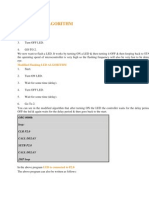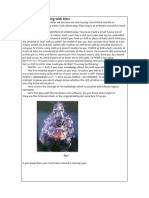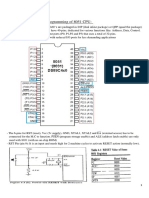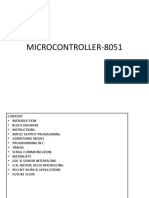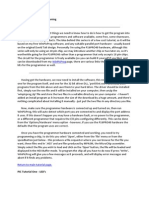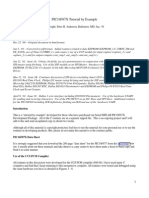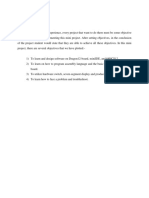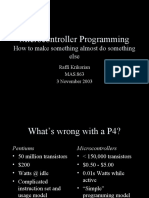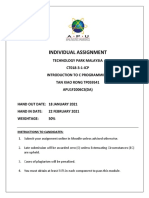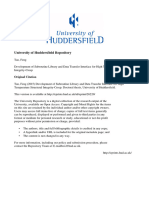0% found this document useful (0 votes)
7 views4 pagesExample 3 Explanation
The program continuously shifts the contents of a shift register to portb, controlling 8 connected LEDs. It initializes portb as output, clears it, and loads the shift register with a specific value, displaying the output through LEDs after a delay. The process involves displaying the current shift register value, pausing for visibility, and then rotating the register left, repeating this cycle indefinitely.
Uploaded by
Jackielyn AlimananCopyright
© © All Rights Reserved
We take content rights seriously. If you suspect this is your content, claim it here.
Available Formats
Download as PDF, TXT or read online on Scribd
0% found this document useful (0 votes)
7 views4 pagesExample 3 Explanation
The program continuously shifts the contents of a shift register to portb, controlling 8 connected LEDs. It initializes portb as output, clears it, and loads the shift register with a specific value, displaying the output through LEDs after a delay. The process involves displaying the current shift register value, pausing for visibility, and then rotating the register left, repeating this cycle indefinitely.
Uploaded by
Jackielyn AlimananCopyright
© © All Rights Reserved
We take content rights seriously. If you suspect this is your content, claim it here.
Available Formats
Download as PDF, TXT or read online on Scribd
/ 4




